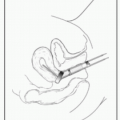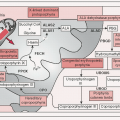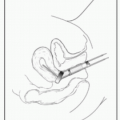Proof of concept trials designed to be first in human (Nat Rev Cancer 2007;7:131) administered while toxicology studies are being performed for IND submission
Single doses of new drug given at low concentrations not expected to cause tox: Correlated w/biomarker assay, imaging technique, of drug activity w/drug administration in vivo
One of the initial phases of clinical experimentation
First-in-human trials: Promising preclinical data, clinical efficacy unproven novel Rx combinations of existing and/or new agents (eg, carboplatin/paclitaxel + PI3K inhibitor)
Population: Heterogeneous (eg, nonhistology specific), newer trials of molecular agents may select pts based on genotype, often includes pts who have failed multiple lines of prior tx
Starting dose: Dose chosen to treat first cohort of pts based on animal studies, commonly 1/10-1/3 of mouse LD10 (dose resulting in death of 10% of mice), other animal species may be used
| ||||||||||||||||||||||||
Rule-based designs
Model-based designs
Classic phase I clinical trial design where pts are treated initially in cohorts of 3s at escalating dose levels, dose level escalation or de-escalation follows modified Fibonacci sequence: 100% → 67% → 50% → 40% → 33%, intra-pt dose escalation is typically not allowed
Relatively simple to implement, provides more info on PK inter-pt variability per dose level, defined sequence of escalation & de-escalation
3+3 Design Based on Number of Patients Experiencing DLT Per Cohort
Cohort
Dose Escalate (↑ to next higher dose level)
Expand Cohort (↑ cohort by 3 pts)
Dose De-escalate (↓ to next lower dose level)
3-Pts
0 DLTs
1 DLT
≥2 DLTs
6-Pts (expanded)
1 DLT
N/A
≥2/6 DLTs
MTD definition = Highest dose where 0-1/16 pts w/DLT (estimates MTD at 33%) or next higher dose level
Affords rapid initial dose escalation, wide variety of designs, intra-pt dose escalation permitted in some designs
Design eg: Initial dose-escalation phase w/single-pt cohorts, dose is escalated rapidly at 96-100% of previous dose → defined stopping rule is hit (eg, 1 DLT or 2 mod. tox observed) → reverts to 3+3 design w/40% dose increments between cohorts
rules to determine MTD
Advantages: Reduces number of pts treated at subtherapeutic doses, designs w/intra-pt dose escalation affords tx at higher & potentially more effective doses, disadvantages: Intra-pt dose escalation may mask cumulative/delayed tox, aggressive & may expose more pts to higher doses, requires acute tox (chronic/cumulative tox not captured)
Assumes DLT predictable by plasma drug concentrations: Plasma exposure defined by AUC extrapolated from preclinical data
Design: Single-pt dose escalation (based on PK data, typically 100%) → stopping rule hit (eg, target AUC reached or DLTs occur) → switch to 3+3
Provides rapid dose escalation but not widely used due to difficulty obtaining real-time PKs, dose escalation may be hampered by inter-pt variability
Bayesian approach: Starts w/defined acceptable probability of DLT (20-33%), 1-3
pts selected per cohort depending on accrual & desired DLT rate, starts at dose thought to be close to MTD
Mathematical model for dose-tox curve continuously modified as each enrolled pt experiences a DLT → dose is then escalated & de-escalated accordingly (next pt is treated at new estimated dose close to MTD) → trial stopped if prespecified condition met or precision in probability of DLT at estimated MTD level is achieved
Requires intensive statistical assistance, thought to provide more precise MTD estimate, may be safer w/fewer pts treated at toxic doses
| ||||||||||||||||
Stay updated, free articles. Join our Telegram channel

Full access? Get Clinical Tree








